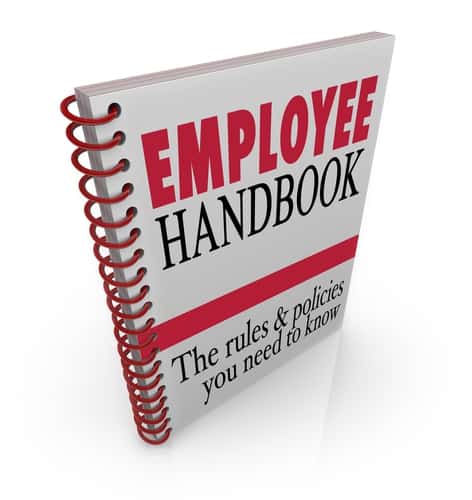
When you started your business, you were probably dutiful and established your business’ human resource (HR) administrative tasks, such as payroll, employee benefits, workers compensation, as well as wrote the established bylaws for the company’s employee handbook. Now, how long as it been since you’ve touched that handbook, a year, five, ten? Whether it has been a year or ten, it is a new year now, which means new state and federal regulations have passed and your HR policies should be updated.
When you started your business, you were probably dutiful and established your business’ human resource (HR) administrative tasks, such as payroll, employee benefits, workers compensation, as well as wrote the established bylaws for the company’s employee handbook. Now, how long as it been since you’ve touched that handbook, a year, five, ten? Whether it has been a year or ten, it is a new year now, which means new state and federal regulations have passed and your HR policies should be updated.
We have collected four tips from the Society of Human Resources (SHRM) that you can use to upgrade your existing employee handbook.
Employee Handbook Update #1: Free Speech Rights
The National Labor Relations Board (NLRB) has made it clear that employers are required to protect their workers’ free speech rights when discussing topics, such as pay, working conditions, supervisor discrepancies, and more. These rights are extend not only to water-cooler conversations, but also to the digital space.
Employee Handbook Update #2: Social Media Practices
Social media is a powerful force and it is time for employers to address the digital platform in their handbook. Business operations are regularly being conducted through smartphones, tablets, and social platforms. To address social media in your employee handbook, you should make it clear that employees do not have any privacy while accessing social media at work or on company-owned equipment.
For example, SHRM noted an incident where an employee was found to be on Facebook every day for at least two hours on a company computer, which was a violation of the organization’s policy, which was outlined in the employee handbook. The company then had grounds to terminate the employee.
Employee Handbook Update #3: Payroll Services
The employee handbook should detail how it will deal with wage practices and specifically that the companywill make every effort in good faith to correct any mistakes that have been made regarding payroll.
Improper deductions from workers’ pay is one of the most common issues that arise when addressing employee handbook bylaws. SHRM states that if improper deductions occur, an employer should correct the mistake which can possibly qualify the company for safe harbor under the U.S. Department of Labor (DOL). That way the company is protected from government penalties.
Employee Handbook Update #4: New State HR Regulations
State regulations are constantly changing and updating. The best way to keep informed is to connect with a reputable professional employment organization (PEO) that can aid your business in staying current on new rules and regulations that will affect HR. A good PEO can help you modify your employee handbook every year to reflect these new policies.
To keep your organization compliant, make sure that your employee handbook is up-to-date every year. Unsure on how to get started? Connect with StaffScapes, a Denver PEO company that can help you update your handbook today.
